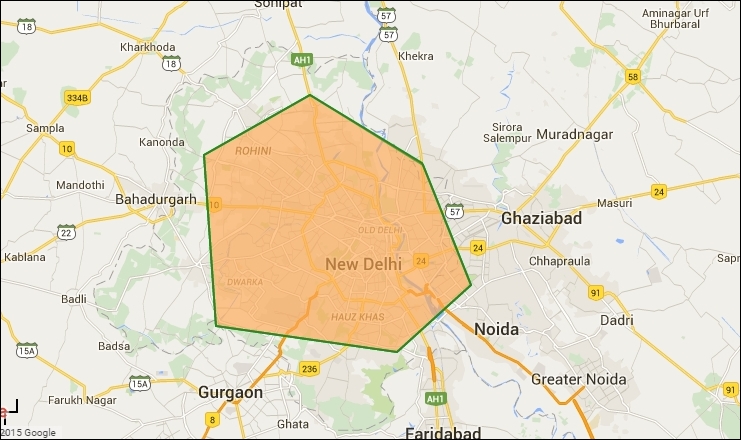Geo-shapes
Geo-shapes are completely different from geo-points. Until now we have worked with simple geo-location and rectangle searches. However, with geo-shapes, the sky is the limit. On a map, you can simply draw a line, polygon, or circle and ask Elasticsearch to populate the data according to the co-ordinates of your queries, as seen in the following image:

Let's see some of the most important geo-shapes.
Point
A point is a single geographical coordinate, such as your current location shown by your smart-phone. A point in Elasticsearch is represented as follows:
{
"location" : {
"type" : "point",
"coordinates" : [28.498564, 77.0812823]
}
}Linestring
A linestring can be defined in two ways. If it contains two coordinates, it will be a straight line, but if it contains more than two points, it will be an arbitrary path:
{
"location" : {
"type" : "linestring",
"coordinates" : [[-77.03653, 38.897676], [-77.009051, 38.889939]]
}
}Circles
A circle...



























































